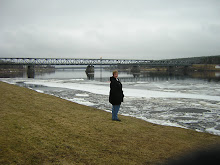 |
| This is like mine. You can buy this one for $17 on eBay |
About a hundred years ago, I was given an espresso machine. It was a little Krups home espresso maker. Back in those days, it was considered a nice enough home machine. I had just discovered cappuccino—in Milan, thank you very much—and was thrilled at being able to have it whenever I wanted (this was before Starbucks). But as so often happens with specialized kitchen equipment, it turned out to be more trouble than it was worth, and the machine was hard to clean, to boot. So I stuck it up in a cabinet and forgot about it.
Fast forward twenty years or so. I've recently discovered that the only thing better than coffee made with Starbucks coffee beans, freshly ground right beforehand, and brewed in a best-in-the-world Technivorm coffee maker is a cup of coffee from Starbucks with a shot or two of espresso in it.* The espresso turns the coffee into a whole new experience—bolder but smoother than coffee alone. I know! You'd think very concentrated coffee added to strong coffee would equal something like battery acid, but it's just the opposite.
So for some months now, far too often, I've been going to Starbucks for coffee with espresso in it instead of just making coffee at home**.
Then I finally remembered that little Krups machine. Without fussing with the steamed milk (which was what made cleanup so hard), it might be worth hauling it out and using it. After some effort and a few delays (which is a whole 'nother long story), I now have a little Krups espresso machine on the kitchen counter beside the Technivorm, fully equipped and ready to work.
I've used it four days now. And I'm learning:
- If you use the same beans for espresso that you use for coffee (and grind them the same) espresso can be bland. (Day 1)
- It's impossible to get coffee from the grinder to the Krups machine's filter basket without spilling it all over the counter. (Day 1)
- If you leave the grounds in the filter holder to cool off and forget about them 'til late in the day they solidify into concrete and become a more-or-less permanent part of the filter basket. (Day 1)
- Just using more of those same beans you use for coffee doesn't help with the blandness. (Day 2)
- If you try to empty the filter holder as soon as you make the espresso, before the grounds harden, the filter holder is going to be hot. All parts of it. Very hot. (Day 2)
- If you buy Espresso Roast at Starbucks and get them to grind it, you can fix both the blandness and spilled ground problems. (Day 3)
- If you flip that little plastic piece on the filter holder closed, it keeps the filter basket in place, so you can empty it while the grounds are hot. (Day 3)
- Still, you'd better be careful to not touch the metal parts. (Day 3)
- Unscrewing the lid of the water reservoir doesn't relieve all the pressure in the machine, even if it's completely finished brewing and you think it does. (Day 4)
- Releasing the filter holder while there's still pressure behind it causes a coffee ground explosion. Literally. It blows coffee grounds everywhere—all over the carafe, the drip tray, the surrounding counter in all directions, the top of the machine and, most significantly, back up into the machine where only a toothpick and bitter, bitter tears will even begin to budge them. (Day 4)
Yeah. At this point, 75¢ a shot is looking like a pretty smart investment.
*For my taste, a short (8 oz) cup needs one shot, i.e., a "Red Eye." A tall (12 oz) cup needs two shots (a "Black Eye"). I don't know what they call three or more shots. I'm guessing "Never close your Eyes again."
**I do have to point out that I just get brewed coffee which, at this writing, is $1.65 for a tall when you bring your own cup. I don't actually spend $5 on coffee, though adding shots does start pushing it in that direction.



No comments:
Post a Comment